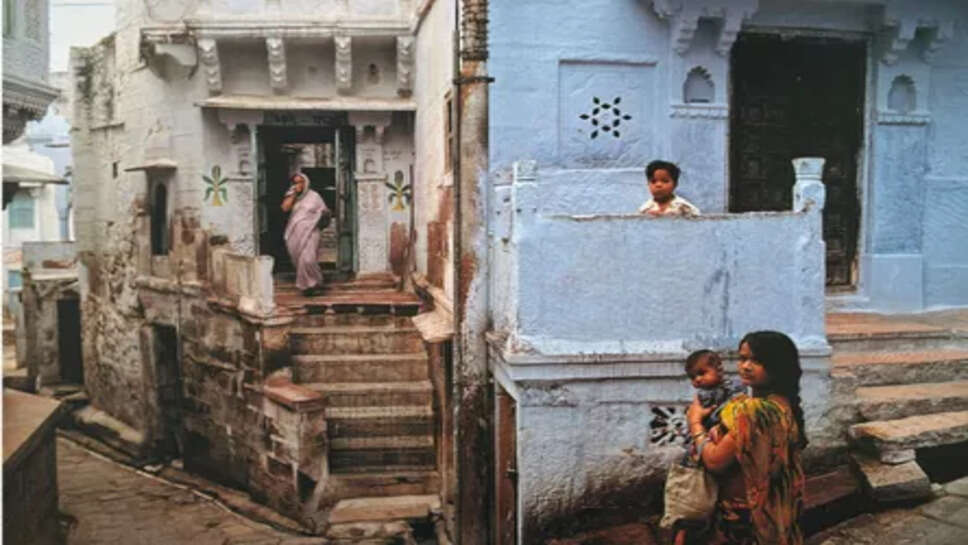They Waited Four Decades — Then the Bones Spoke

It was an ordinary summer evening in 1983 when 19-year-old Ramesh Yadav went missing. He left his home in a small town in Uttar Pradesh to run a quick errand and never came back. His mother remembers the exact shirt he wore—a faded blue kurta—and the scent of the talcum powder he had just applied before stepping out. Hours turned into days, and days into months. The police filed a missing person’s report. Flyers were posted. Neighbors were questioned. And still, nothing.
The family never found closure. No body, no trace, no last phone call. Just the silence that filled every room in the house. Grief gave way to routine. Ramesh’s parents grew older, his siblings grew up, his photos yellowed in dusty frames—but the ache of not knowing stayed fresh. For years, the Yadavs marked his birthday and lit a lamp in his memory on Diwali. Even as hope waned, the questions persisted: Where did he go? What happened that night? Did he suffer?
Then, in the year 2025, four decades later, they finally got an answer. It came not from a phone call or a witness, but from science—from a postmortem conducted on remains found near the edge of a dried-up canal just a few kilometers from where Ramesh had disappeared.
A Skeleton in the Soil
In January 2025, construction workers excavating land for a new expressway near Mirzapur stumbled upon human bones. Police were called in, and the site was cordoned off. Forensic teams collected the remains—a skull, a few long bones, pieces of clothing embedded in the dirt. Nothing extraordinary, until a tiny locket surfaced among the debris.
Inside was a black-and-white photo: a teenage boy with wide-set eyes and a hesitant smile. The police released the image to local press, and soon, whispers spread. Someone said it resembled Ramesh Yadav. Another swore they remembered that very same locket hanging from his neck in the early ’80s.
The Yadav family was contacted. Initially skeptical, they visited the police station with trembling hands and years of buried pain. DNA samples were collected from surviving relatives. Two months later, the results came back: the remains were indeed those of Ramesh Yadav.
The Long Awaited Postmortem
After confirming the identity, a thorough forensic postmortem was carried out. For the first time in 42 years, there was movement in the investigation. The postmortem concluded that Ramesh died of blunt force trauma to the head. The pattern of injuries suggested he had been attacked, possibly with a heavy object, before being disposed of in the canal, which was much deeper and filled with water back then.
Fragments of synthetic rope found near the skeleton hinted at restraint. It wasn’t a random accident or a case of getting lost. It was murder.
The findings brought a strange mix of sorrow and validation to the Yadavs. For years, they had suspected foul play, but without evidence, they were dismissed, told to move on, to accept that “these things happen.” The postmortem didn’t just reveal cause of death—it restored the dignity of the family's questions.
Justice, Too Late?
The most difficult part of this revelation was its timing. Forty-two years had passed. The list of suspects was long gone—moved away, passed on, or erased by memory. The case file, long closed, had gathered layers of dust in a forgotten police archive.
Still, the authorities reopened the case. Some detectives treated it as symbolic closure, a gesture to a family who had waited too long. Others saw a chance to apply modern forensic tools, including crime scene reconstruction and digital mapping of the old canal area.
The motive remained unclear. Ramesh had no known enemies. He wasn’t involved in crime or conflict. Theories abounded: a mistaken identity, a robbery gone wrong, a jealous friend. But none could be confirmed. All the answers came too late to hold anyone accountable.
And yet, in some ways, justice had arrived—not in the form of punishment, but of acknowledgment.
The Family's Reckoning
For the Yadavs, the discovery and postmortem brought both grief and relief. They held a funeral for Ramesh in April 2025, four decades after he was last seen. His bones were wrapped in white cloth, placed in a wooden urn, and immersed in the Ganges as per Hindu custom. The rituals were attended by family, friends, and neighbors—some of whom had long given up hope, others who had never known Ramesh but came to pay respects.
His mother, now 83, sat through the ceremonies with stoic calm. “At least now I know,” she whispered to a reporter. “For 42 years I prayed for answers. Today I finally feel heard.”
Science and the Dead
This case highlights the growing role of forensic science in solving long-standing mysteries. New technologies—DNA analysis, isotopic profiling, forensic archaeology—can uncover details long buried beneath time and earth. In India, where millions of missing person cases go unresolved every year, such tools offer hope not just for prosecution, but for peace of mind.
Yet, such breakthroughs are rare. Most families never get the call the Yadavs received. The system remains riddled with delays, underfunding, and procedural lapses. Thousands of unidentified bodies are cremated or buried without ever undergoing DNA testing. For every Ramesh Yadav, there are countless others still waiting in silence.
A Symbol Beyond One Case
Ramesh’s story has resonated widely, especially on social media, where younger generations see it as a tragic but powerful lesson. It reminds us that grief doesn’t fade with time—it only changes shape. It underscores the importance of persistence, of never letting unanswered questions define your peace.
His case also adds weight to the argument for a national missing persons DNA database—something activists have long advocated for. If such a system had existed, Ramesh’s remains could have been identified years ago.
“They looked and looked for answers,” said Ramesh’s niece at the funeral. “And after 42 years, we finally know what happened. That’s something. That’s everything.”
Sometimes closure doesn’t come wrapped in justice or tied with vengeance. Sometimes it’s simply the confirmation that the lost were not forgotten—that their lives mattered, and that someone still cared enough to ask the question: what happened?
For the Yadav family, the postmortem wasn’t just a medical report. It was an answer. A conclusion. A key to a door left open too long.
